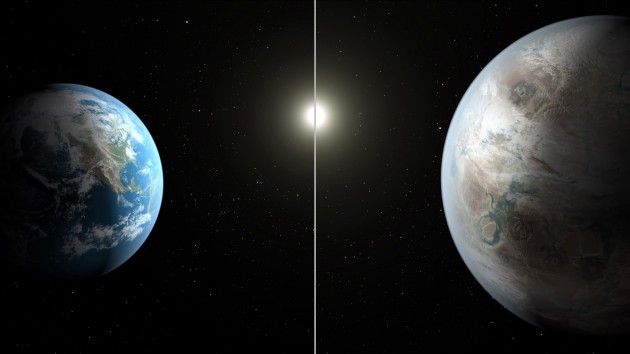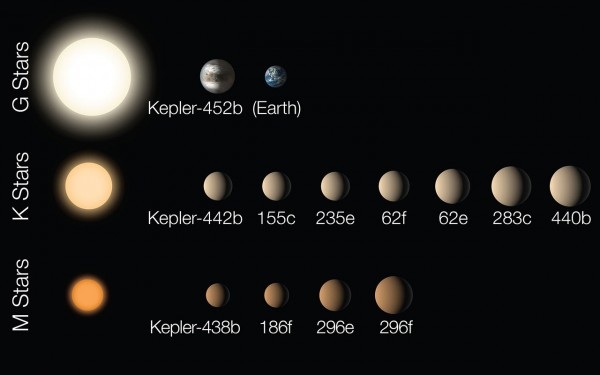
NASA’s Kepler mission has confirmed the first near-Earth-size planet in the “habitable zone” around a sun-like star. This discovery and the introduction of 11 other new small habitable zone candidate planets mark another milestone in the journey to finding another “Earth.”
The newly discovered Kepler-452b is the smallest planet to date discovered orbiting in the habitable zone — the area around a star where liquid water could pool on the surface of an orbiting planet — of a G2-type star, like our sun. The confirmation of Kepler-452b brings the total number of confirmed planets to 1,030.

Another Earth
Kepler 452b is 1400 light-years from Earth, orbits its star every 385 days, and is 1.6 times the diameter of Earth. Transit measurements don’t give any information about mass, but, judging from similar exoplanets for which masses are known, the Kepler team estimates it is five times as heavy as Earth, so any visitor would feel twice the gravity we are used to at home.
The NASA team consulted planetary geologists about what conditions there may be like, and they predicted that it would likely have experienced active volcanos for some time. Its higher mass may give it a thicker atmosphere and more cloud cover than Earth has. The greater age of the star means it will be heating up, so Kepler 452b may be experiencing a runaway greenhouse effect similar to the one that is currently toasting Venus.
Aliens
However, because of its size and distance, it is unlikely that we will find out more about Kepler 452b for a considerable time, if ever, unless it’s home to aliens that may visit us in earth!
Originally posted 2015-08-01 15:25:06. Republished by Blog Post Promoter











